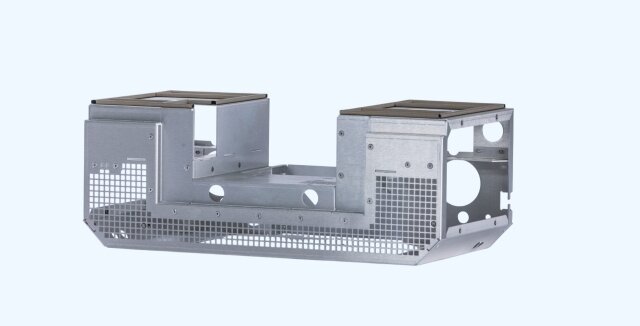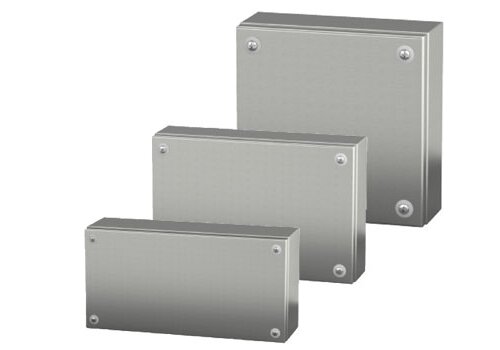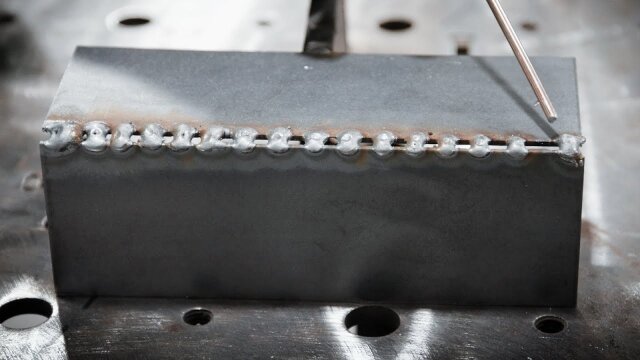Обработка поверхности - важный этап в производстве листового металла. Даже если деталь вырезана, сформована и сварена идеально, ее характеристики и внешний вид все равно зависят от обработки поверхности. Финишная обработка защищает металл от ржавчины, повышает его долговечность и придает ему внешний вид, необходимый для использования по назначению.
В таких отраслях, как электроника, медицинское оборудование и автомобилестроение, различные виды отделки служат разным целям. Некоторые виды отделки улучшают электропроводность, в то время как для других приоритетом является прочность, цвет или защита от воздействия окружающей среды. Правильный выбор отделки гарантирует, что деталь не только хорошо выглядит, но и отлично функционирует в предназначенных для нее условиях.
В этой статье рассматриваются стандартные варианты отделки деталей из листового металла. Мы рассмотрим гальваническое покрытие, анодирование, герметизацию, порошковое покрытие, покраску и пассивацию. Каждый метод имеет свои преимущества, зависящие от металла, конструкции детали и ее предназначения.
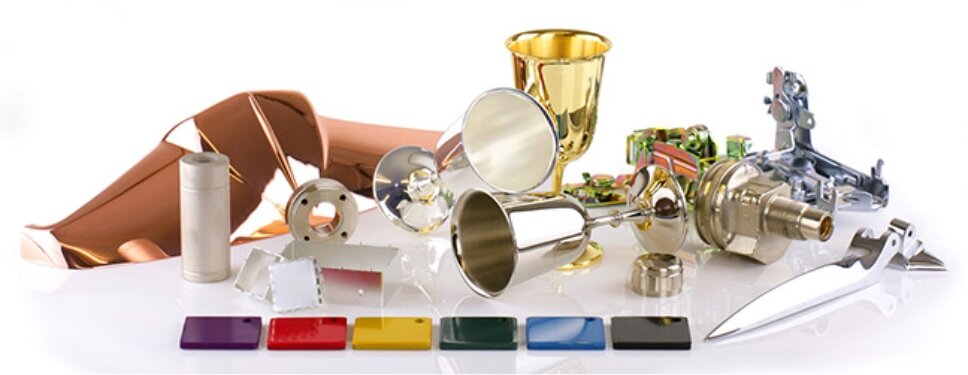
Покрытие
Нанесение тонкого слоя металла на подложку, часто с помощью электрохимического или химического процесса. Цель - улучшить свойства поверхности без изменения структуры основного материала.
Толщина покрытия обычно варьируется от 0,1 до 25 микрон. Более толстые слои обеспечивают более надежную защиту, но стоят дороже и требуют больше времени для нанесения.
Никелирование
Никелирование широко используется при изготовлении листового металла. В нем сбалансированы коррозионная стойкость, износостойкость и визуальная привлекательность. Никелевые покрытия твердые, гладкие и яркие, что помогает уменьшить трение и придает полированный вид. Никелевое покрытие может быть нанесено гальваническим (блестящий никель) или электролитическим способом, каждый из которых подходит для разных областей применения.
Яркий никель использует электричество для создания блестящей, отражающей поверхности. Добавки улучшают гладкость и блеск. Эта отделка является стандартной для панелей, ручек и декоративных деталей. Оно противостоит коррозии и подчеркивает точность изготовленных деталей. Для усиления защиты блестящий никель часто сочетается со слоями хрома или меди. Они также повышают твердость поверхности, уменьшая появление царапин и деформаций.
При безэлектродном никелировании никель-фосфорный или никель-борный сплав наносится химическим способом, без использования электричества. Это обеспечивает равномерное покрытие краев, углов и углублений, где гальваническое покрытие может быть неравномерным. Это идеальный вариант для сложных деталей из листового металла с вырезами или детализированными формами. Безэлектролитный никель обеспечивает превосходную коррозионную и износостойкость, сохраняя при этом точные размеры.
Цинк, олово, золото, серебро и другие варианты покрытия
На другие металлы покрытие наносится в зависимости от требований к проводимости, защите от коррозии или стоимости.
Цинкование это экономичный метод, который защищает сталь, образуя защитный слой, тем самым продлевая срок службы детали. Покрытия обычно имеют серый или голубоватый цвет, но могут быть пассивированы для придания цвета или обеспечения дополнительной защиты. Цинк идеально подходит для использования внутри помещений или в мягких условиях.
Оловянное покрытие противостоит коррозии и улучшает пайку. Оно имеет гладкую, мягкую поверхность, которая улучшает проводимость и уменьшает трение. Олово лучше всего подходит для неизнашиваемых деталей, особенно в электронике.
Золотое и серебряное покрытие используется для обеспечения высокой проводимости и устойчивости к коррозии. Золото обладает высокой проводимостью, устойчиво к потускнению и часто используется в разъемах и клеммах. Серебро немного дешевле и обладает высокой проводимостью, но может потускнеть без защиты. Оба вида широко используются в аэрокосмической промышленности, телекоммуникациях и точной электронике.
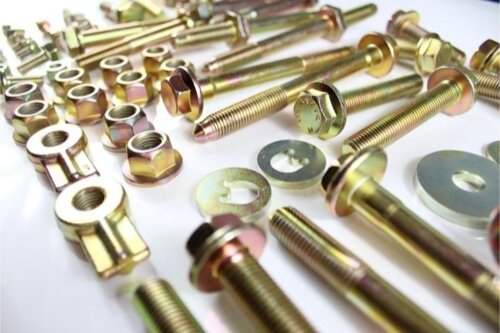
Анодирование (процесс электрохимического преобразования)
Анодирование - это процесс, в котором используется электрический ток для формирования оксидного слоя на металлической поверхности. Деталь выступает в качестве анода в электролитической ячейке, откуда и происходит название. Ионы кислорода из электролита соединяются с атомами металла на поверхности, образуя пористую оксидную пленку.
Процесс обычно состоит из трех этапов: очистки, анодирования и герметизации. Очистка удаляет масла и грязь. Анодирование формирует оксидный слой. Герметизация закрывает поры для защиты от коррозии. Пористое покрытие также может впитывать красители, что позволяет выполнять декоративную окраску.
Анодированные поверхности имеют более сложную структуру, чем основной металл. Это повышает износостойкость и защищает от коррозии. Толщина слоя обычно составляет от 5 до 100 микрон, в зависимости от области применения.
Анодирование алюминия
Анодирование алюминия это самый распространенный вид анодирования. Оно укрепляет естественный оксидный слой алюминия, делая его более прочным и декоративным. Различные кислоты создают пленку разной толщины и свойств.
В промышленности используются три основных типа: Тип I (хромовая кислота), Тип II (серная кислота) и Тип III (твердое покрытие). Каждый тип имеет свои преимущества, в зависимости от предназначения детали.
Тип I - хромовая кислота
Тип I использует хромовую кислоту в качестве электролита. Она создает тонкий оксидный слой, обычно толщиной от 0,5 до 2,5 мкм. Этот тип обеспечивает хорошую коррозионную стойкость и сохраняет размеры практически неизменными, что идеально подходит для деталей с жесткими допусками.
Тонкое покрытие сохраняет высокую усталостную прочность. Оно часто используется в аэрокосмической и оборонной промышленности, где детали требуют одновременно точности и защиты от коррозии.
Недостатком является то, что хромовая кислота стоит дорого и не очень экологична. Многие отрасли промышленности заменяют ее более безопасными альтернативами.
Тип II - Серная кислота (декоративная)
Тип II использует серную кислоту и создает более толстый, пористый слой, обычно от 5 до 25 микрон. Пористая структура может впитывать красители, что делает ее идеальной для декоративных или фирменных деталей.
Этот тип сочетает в себе защиту от коррозии, твердость и внешний вид. Он широко распространен в потребительских товарах, электронике и архитектурных компонентах. После окрашивания герметизация фиксирует цвет, обеспечивая длительную стойкость.
Поскольку слой толще, размеры немного меняются. Дизайнеры обычно учитывают это при работе с жесткими допусками.
Тип III - твердое покрытие
Тип III, или анодирование с твердым покрытиемСоздает очень толстый и плотный слой, до 100 микрон. Он использует более низкие температуры и более высокий ток, чем другие типы.
Твердое покрытие идеально подходит для деталей, требующих максимальной износостойкости в жестких условиях эксплуатации. Твердость поверхности может достигать уровня, сравнимого с твердостью закаленной стали. Оно также может снижать трение и обеспечивать электроизоляцию.
Область применения - машиностроение, аэрокосмическая техника и военное оборудование. Твердое покрытие менее пригодно для окрашивания, но оно обеспечивает непревзойденную долговечность и коррозионную стойкость.
| Тип | Электролит | Типичная толщина (мкм) | Варианты цвета | Общие приложения | Примечания |
|---|---|---|---|---|---|
| Тип I - хромовая кислота | Хромовая кислота | 0.5 - 2.5 | Limited (серый) | Аэрокосмические детали, прецизионные компоненты | Тонкий слой, минимальное изменение размеров, хорошо подходит для жестких допусков |
| Тип II - Серная кислота (декоративная) | Серная кислота | 5 - 25 | Широкий ассортимент (может быть окрашен) | Потребительские товары, архитектурные детали, электроника | Отличное поглощение цвета, широко используется декоративная отделка |
| Тип III - твердое покрытие | Серная кислота (низкая температура, высокий ток) | 25 - 100 | Ограниченный (от темно-серого до черного) | Промышленное оборудование, аэрокосмические и оборонные компоненты | Толстый, плотный, износостойкий слой; идеально подходит для суровых условий эксплуатации |
Анодирование Титана
Титановое анодирование Работает аналогично анодированию алюминия, но цвет получается естественным. Цвет определяется толщиной оксида, которая меняется в зависимости от напряжения. Таким образом, получается целый спектр цветов, от золотого и синего до фиолетового и зеленого.
Оно повышает коррозионную стойкость в медицинских, морских и аэрокосмических приложениях. Анодирование титана также улучшает биосовместимость, что делает его идеальным материалом для имплантатов и хирургических инструментов. Поверхность становится более твердой, гладкой и износостойкой.
При анодировании титана соблюдаются установленные стандарты для обеспечения постоянного качества. Общие стандарты включают:
- AMS 2487: Титановое анодирование для защиты от коррозии и износа.
- AMS 2488: Пленки из оксида титана для улучшения цвета и поверхности.
Герметизация (после анодирования)
После анодирования оксидный слой остается пористым. Эти поры могут впитывать красители или задерживать грязь, если их оставить открытыми. Герметизация - это этап после анодирования, который запечатывает поры, повышая коррозионную стойкость и сохраняя внешний вид поверхности с течением времени.
Герметизация обычно включает в себя замачивание анодированных деталей в нагретом растворе. Это гидратирует оксидный слой и закрывает поры. Основными методами герметизации являются:
- Герметизация в горячей воде: Деталь помещается в кипящую деионизированную воду (около 96-100°C). Оксид алюминия превращается в гидроксид алюминия, который разбухает и запечатывает поры. Это самый простой и распространенный метод.
- Никель-ацетатное уплотнение: Часто используется для окрашенных деталей или когда требуется дополнительная коррозионная стойкость. Соль никеля вступает в реакцию с оксидом, создавая более прочное и долговечное уплотнение.
- Холодная герметизация: Выполняется при более низких температурах с использованием химических веществ, таких как фторид никеля. Это быстрее и экономит энергию, что делает его идеальным для крупносерийного производства.
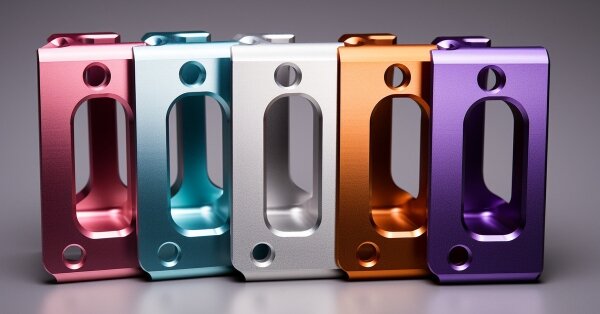
Порошковое покрытие
Порошковое покрытие это сухой метод отделки, который придает металлическим деталям защитный и декоративный слой. Вместо жидкой краски используется электростатически заряженный порошок, который прилипает к металлической поверхности. Затем деталь запекается в печи, где порошок плавится и образует гладкое, прочное покрытие.
Этот процесс обеспечивает превосходную устойчивость к износу, коррозии и ультрафиолетовому излучению. Это популярный выбор для изготовления деталей из листового металла как в промышленных, так и в потребительских товарах.
Процесс порошкового окрашивания состоит из нескольких ключевых этапов, обеспечивающих прочное и ровное покрытие:
- Подготовка поверхности: Металлическая деталь очищается и, в некоторых случаях, обрабатывается химикатами или подвергается пескоструйной обработке для удаления жира, масла или ржавчины. Чистая поверхность способствует лучшему прилипанию порошка.
- Нанесение порошка: Порошок - чаще всего полиэфирный, эпоксидный или полиуретановый - распыляется с помощью электростатического пистолета. Заряженные частицы прилипают к заземленной металлической детали.
- Отверждение: Деталь с покрытием запекается в печи при температуре 160-220°C (320-430°F). Под воздействием тепла порошок расплавляется и превращается в однородную твердую пленку.
- Охлаждение и проверка: После отверждения деталь охлаждается и проверяется на равномерность покрытия, блеск и наличие дефектов поверхности.
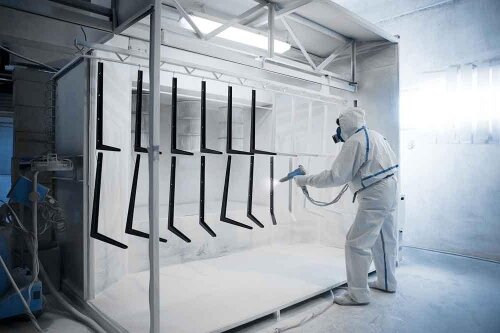
Рисование
Рисование это стандартный метод отделки деталей из листового металла. Она наносит жидкое покрытие, которое придает цвет, защищает от коррозии и делает поверхность гладкой. В отличие от порошкового окрашивания, окраска затвердевает при более низких температурах, что делает ее пригодной для более широкого спектра материалов.
Этот метод идеален, когда требуются особые цвета, глянцевая отделка или экономичная защита. Он широко используется в автомобильной, электронной и других отраслях промышленности.
Процесс покраски включает в себя несколько этапов, чтобы обеспечить долговечное и качественное покрытие:
- Подготовка поверхности: Металлическая поверхность очищается для удаления масел, грязи и ржавчины. Предварительная обработка, такая как фосфатирование или грунтовка, может повысить адгезию краски и коррозионную стойкость.
- Нанесите грунтовку: Грунтовка помогает краске прилипнуть к металлу и обеспечивает однородную основу. Он также обеспечивает дополнительный слой защиты от коррозии.
- Нанесение верхнего слоя краски: Основной слой краски наносится распылением, кистью или окунанием. Распространенные типы красок включают акриловые, полиуретановые или эпоксидные покрытия.
- Отверждение или сушка: В зависимости от краски деталь либо высушивается на воздухе, либо запекается в печи для придания поверхности твердости.
Пассивирующие и конверсионные покрытия
Пассивация и конверсионные покрытия защищают металлические поверхности от коррозии. Пассивация удаляет поверхностные загрязнения и образует на поверхности тонкий, устойчивый оксидный слой. Конверсионные покрытия вступают в химическую реакцию с металлом, создавая защитную пленку, которая повышает коррозионную стойкость и улучшает адгезию краски.
Для нержавеющей стали пассивация удаляет свободное железо и восстанавливает естественный слой оксида хрома. Это повышает коррозионную стойкость без изменения внешнего вида или размеров металла. Она широко используется в пищевой промышленности, медицинских приборах и аэрокосмических компонентах.
Конверсионные покрытия наносятся на алюминий, цинк и сталь. На алюминии хроматные или фосфатные покрытия повышают коррозионную стойкость и улучшают адгезию краски. На стали фосфатные покрытия повышают смазываемость при формовке и создают более прочную основу для покраски или порошковой окраски.
Если вы планируете работу с листовым металлом и хотите получить наилучшие результаты отделки, отправьте нам свои чертежи сегодня. Наша команда рассмотрит ваш дизайн и предложит лучшие материалы, процессы и отделку. Начните составлять смету прямо сейчас и сделайте свои детали прочнее, долговечнее и визуально совершеннее.
Привет, я Кевин Ли

Последние 10 лет я занимался различными формами изготовления листового металла и делился здесь интересными идеями из своего опыта работы в различных мастерских.
Связаться

Кевин Ли
У меня более десяти лет профессионального опыта в производстве листового металла, специализирующегося на лазерной резке, гибке, сварке и методах обработки поверхности. Как технический директор Shengen, я стремлюсь решать сложные производственные задачи и внедрять инновации и качество в каждом проекте.


